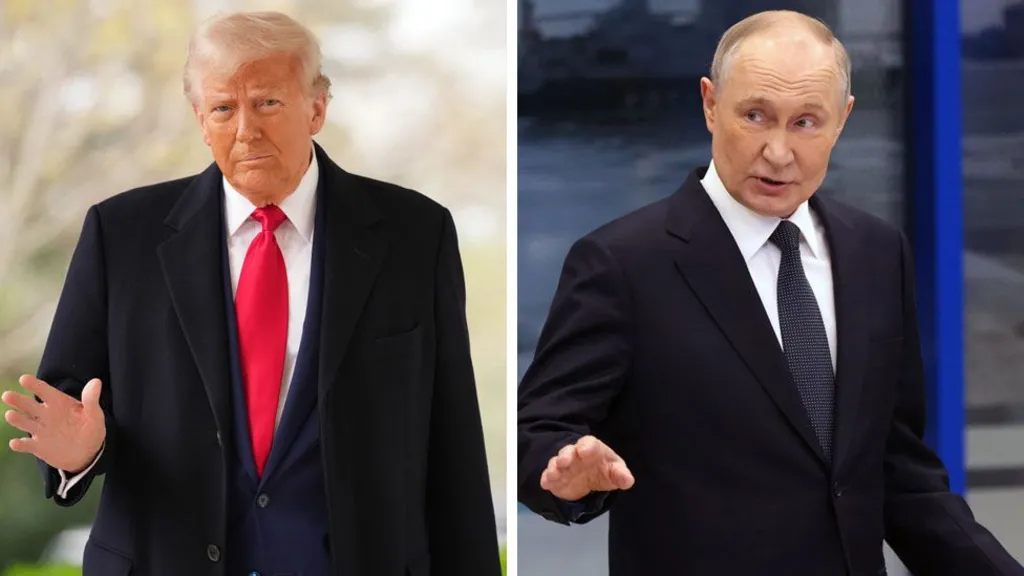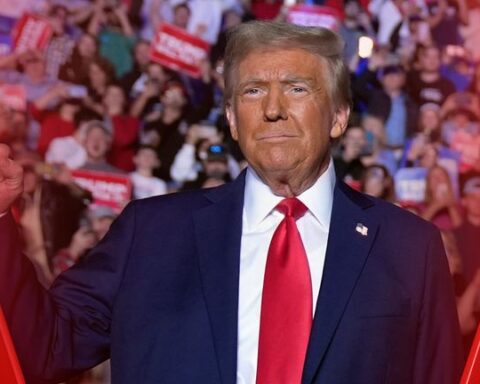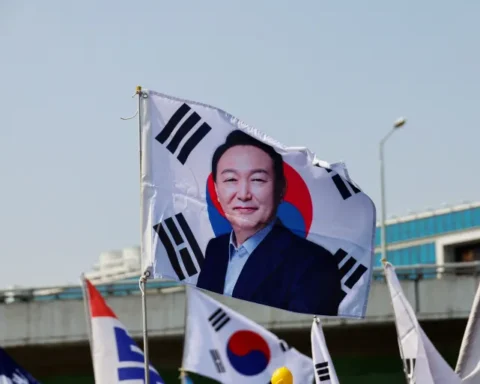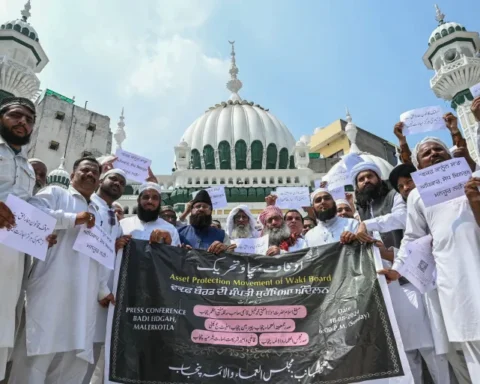If I was writing a Russian language course for 2025, Lesson One would definitely contain the phrase for rollercoaster: Amerikanskiye gorki.
It means, literally, American Hills.
How appropriate.
After all, with President Donald Trump now operating the ride, and Vladimir Putin pressing some of the buttons, US-Russian relations have become one of late, with highs and lows and twists and turns.
You never know quite where you are now.
Analysing geopolitical trends is hard enough at the best of times. It’s even harder careering along on the American Hills of the 47th US president.
When Trump returned to the White House in January, his direction of travel was clear: he set out to repair relations with Russia.
There were Trump/Putin phone calls, high-level US-Russia negotiations. At one point Washington voted with Moscow against a UN resolution that identified Russia as the “aggressor” in Russia’s war against Ukraine.
Whenever the Trump administration exerted pressure, it was always on Kyiv, never on the Kremlin.
But a week or so ago the rollercoaster ride began.
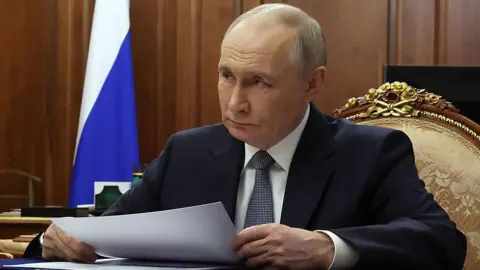 Vyacheslav PROKOFYEV/POOL/ AFP
Vyacheslav PROKOFYEV/POOL/ AFPAfter Vladimir Putin had proposed replacing President Volodymyr Zelensky’s administration with “external governance” in Ukraine under the auspices of the UN, President Trump made it known that he was “angry” with Putin.
“I was disappointed in a certain way, some of the things that were said over the last day or two having to do with Zelensky,” Trump commented on 30 March. “Because when [Putin] considers Zelensky not credible, he’s supposed to be making a deal with him. Whether you like him or you don’t like him.”
After a day playing golf with Trump, the president of Finland, Alexander Stubb, told the Guardian newspaper: “I think America, and my sense is also the president of the United States, is running out of patience with Russia.”
Trump threatened to impose secondary tariffs of up to 50% on Russian oil exports if Russia was found to be dragging its heels on a Ukraine peace deal.
A bi-partisan group of US senators has gone even further.
They’ve drawn up a bill that would impose 500% secondary tariffs on countries that purchase Russian oil, gas and other resources.
Up to this point the Russian press had been welcoming the thaw in relations between Moscow and Washington. The Nezavisimaya Gazeta newspaper last month ran a headline stating that US and Russian officials had “started speaking the same language”.
This week things changed.
On Wednesday, Moskovsky Komsomolets newspaper accused the Trump administration of “administrative insanity… inexperience… immaturity”.
It criticised the administration’s “bragging and arrogance” and “its desire to declare ‘huge breakthroughs’ when the first steps have barely been taken”.
The same day, Komsomolskaya Pravda declared: “On Ukraine talks, Donald’s mood changes as often as the wind.”
Signs, perhaps, of a cold wind blowing between Moscow and Washington?
And yet when Trump announced his sweeping tariffs this week, Russia wasn’t on the list.
Instead, US authorities had organised a sanctions waiver for a key Kremlin official: Putin’s foreign investment envoy Kirill Dmitriev.
Dmitriev flew into Washington for talks with the Trump administration.
A sign, perhaps, of Russia and America getting on with the business of… getting along?
But on Friday, another warning from Washington to Moscow. This time at a meeting of Nato foreign ministers in Brussels.
“President Trump’s not going to fall into the trap of endless negotiations about negotiations,” said US Secretary of State Marco Rubio.
“We will know soon enough, in a matter of weeks, not months, whether Russia is serious about peace or not.”

